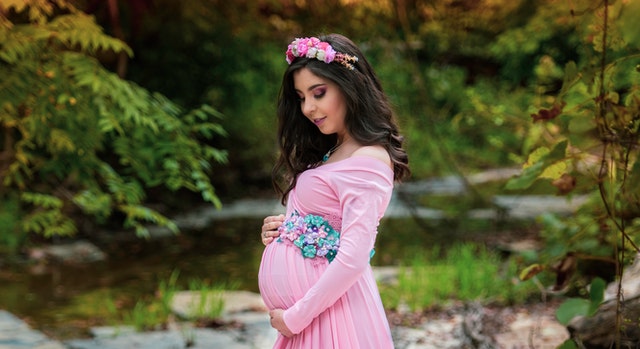Pregnancy tights are a type of hosiery designed specifically for women who are pregnant. They are made from stretchy, comfortable material that can accommodate changes in a woman’s body shape as her pregnancy progresses.
Pregnancy tights are typically designed with a higher waistband that can be worn over the belly, offering gentle compression and support to the abdominal area. This can help to reduce swelling and discomfort, and can also provide a smooth and flattering silhouette.
Some pregnancy tights also feature reinforced tummy panels that can help to provide additional support to the growing uterus. This can help to alleviate pressure on the lower back, which is a common issue during pregnancy.
Pregnancy tights come in a variety of styles, including footless and footed options, and can be worn with a variety of tops and dresses. They can be especially useful during the later stages of pregnancy, when a woman may experience discomfort and swelling in her legs and feet.
It’s important to choose pregnancy tights that fit well and provide the right amount of support for your body. It’s also a good idea to speak with your doctor before wearing pregnancy tights, especially if you have any medical conditions or concerns.
What are the Different Types of Pregnant Tights?
Pregnant tights, also known as maternity tights, are designed to provide support and comfort to a woman’s growing belly during pregnancy. They are available in different types, each designed to meet specific needs and preferences:
- Over-the-bump tights: These tights have a wide waistband that fits over the bump, providing support and comfort for the growing belly.
- Under-the-bump tights: These tights have a low-rise waistband that fits under the bump, offering a comfortable and flattering fit.
- Support tights: These tights are designed to provide extra support to the legs, hips, and belly during pregnancy. They are often made with a combination of cotton and spandex for comfort and stretch.
- Sheer tights: These tights are made from sheer material and provide a light, airy feel to the legs. They are ideal for wearing during the warmer months.
- Footless tights: These tights are designed to end at the ankle, leaving the feet exposed. They are ideal for wearing with open-toed shoes or sandals.
- Shaping tights: These tights are designed to provide a slimming effect, shaping the legs and helping to smooth any bulges. They are often made with a higher percentage of spandex.
Each type of pregnant tight is designed to offer different benefits, so it’s important to choose the right type depending on your needs and preferences.
How to Choose the Right Type?
Pregnancy tights are a type of hosiery designed specifically for women who are pregnant. They are made from stretchy, comfortable material that can accommodate changes in a woman’s body shape as her pregnancy progresses.
When choosing pregnancy tights, it’s important to consider the following factors:
- Material: Look for tights made from breathable, stretchy material that can accommodate the changes in your body shape as your pregnancy progresses. Some tights are made with a blend of cotton and spandex, while others may be made with nylon and other synthetic materials.
- Waistband: Choose tights with a comfortable, supportive waistband that can be worn over your growing belly. Some tights may feature a higher waistband that provides additional support and compression to the abdominal area.
- Reinforced tummy panel: Some pregnancy tights feature a reinforced tummy panel that can help to provide additional support to the growing uterus. This can help to alleviate pressure on the lower back, which is a common issue during pregnancy.
- Footed or footless: Pregnancy tights come in both footed and footless options. Footed tights provide full coverage, while footless tights allow you to wear your shoes.
- Style: Pregnancy tights come in a variety of styles, including opaque, sheer, and patterned options. Consider your style and the type of clothing you’ll be wearing with the tights when choosing a style.
- Fit: Make sure to choose tights that fit well and provide the right amount of support for your body. It’s also a good idea to try them on before purchasing to ensure a comfortable fit.
It’s important to speak with your doctor before wearing pregnancy tights, especially if you have any medical conditions or concerns.




